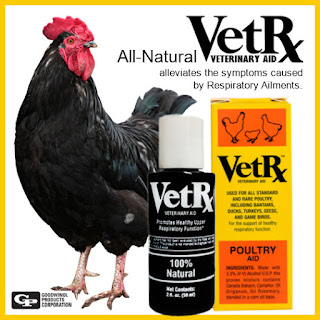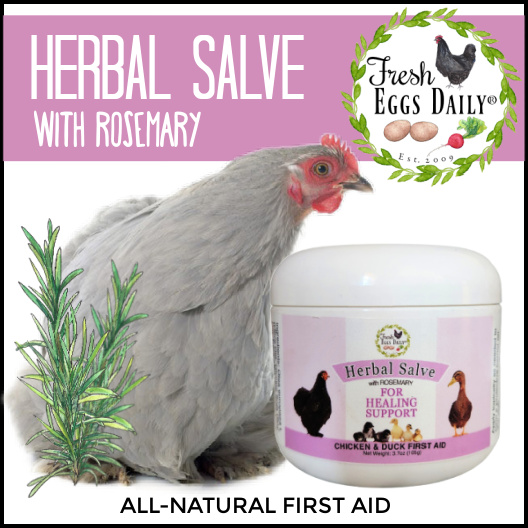How Do Chickens Stay Warm in the Winter?
Most breeds of chickens generally do just fine in cold temperatures, but the better you understand just how a chicken stays warm and how cold is too cold for chickens, the easier it will be for you to do a few easy things to make winters more comfortable for your flock.
For the most part, as long as they can stay dry and out of the wind, your chickens should be just fine in the winter no matter where you live.
Chickens, like most animals, are built to handle cold better than heat. So most likely they're far more happy in cooler temperatures than you might imagine.
How Do Chickens Stay Warm in the Winter?
How Cold is Too Cold for Chickens?
Chickens are most comfortable in temperatures between 60 to 75 degrees Fahrenheit. In that temperature range, they are neither too hot nor too cold.
And believe it or not, chickens actually have a far easier time staying warm in the winter than they do keeping cool in the summer.
While the optimal temperature for chickens is between 60 to 75 degrees Fahrenheit, they are perfectly comfortable in temperatures down to 40 to 45 degrees, and will even do just fine if temperatures drop below freezing - and even below zero!
I find that my chickens prefer to stay inside their coop when the temperatures drop below 20 degrees Fahrenheit, but it's dropped to a low of NEGATIVE 16 degrees here in Maine overnight during the winter and my chickens have been just fine without heat in their coop.
Cold Winter Nights
Of course, it's the cold winter nights that pose the greatest challenge to chickens staying warm.
Overnight temperatures here in Maine can plummet to well below zero in the dead of winter and often don't go above freezing for weeks on end.
Despite that, and despite not heating my coop, my chickens do just fine in their straw-filled, draft-free, dry coop.Interestingly enough, many of the ways our domesticated chickens stay warm are the same ways wild birds stay warm.
So how DO chickens stay warm?
Fluffing their Feathers
Chickens have several tricks up their sleeve (wing?) to stay warm naturally when the mercury drops, making them pretty well-equipped to handle the cold.
You might notice that your chickens will fluff up their feathers when it gets cold. (Wild birds do this as well.)
Their downy feathers trap tiny pockets of air next to their body, allowing the chicken to warm those pockets of air with its body heat and hold that warm air close to the body, preventing cold air from touching the skin. It works like insulation for them.
The more air that stays trapped, the warmer the chicken. So they'll fluff up their outer feathers when it's cold outside to trap as much air in the down as possible.
As an aside, one reason why chickens molt each fall is so they have nice, new feathers come winter.
Fun Fact: the technical term for fluffing up their feathers is “ptiloerection".
A Leg Up
Chickens' legs and feet are thin and featherless (at least most breeds are), so therefore they lose heat rapidly through their feet. In order to counteract this heat loss, they have another trick for staying warm.
You might notice your chickens (and ducks) standing on one foot during the day in the winter. They do this to reduce heat loss through their feet and to warm up one foot at a time, tucking it into the feathers on their abdomen, and then switching feet.
Best Style of Roosting Bars
In the coop, wide wooden roosts are best to keep the chickens' toes and feet warm through the night. Using a flat, wide board allows the chickens' feet to be completely covered by their bodies.
A 2x4 board with the 4" side facing up is perfect. That way the roosting chickens' toes don't hang over the edge where they would be exposed to the cold.
Their feet and toes are kept warm sandwiched between the board and the warm feathers on their abdomen.
Creating Energy Through Digestion
Living things (including chickens) generate heat when they digest their food. You can give your chickens an additional "leg up" on the cold by offering a pre-bedtime treat of scratch grains, whole or cracked grains, dried corn etc.
The whole grains take longer and are harder to digest than other foods and therefore require the chickens' body to produce more energy/heat overnight. This helps to keep them warm during the coldest part of the night.
In general, it's good practice to put out feed and leave it out all day for your flock in the winter. They will eat more in the winter because they burn more calories trying to stay warm, and there's no grass or bugs to eat to supplement their diet.
It's also not a bad idea to feed more high-calorie/high-fat treats in the winter like sunflower seeds or suet because a layer of subcutaneous fat will also help your chickens stay warm through the winter.
The Head Tuck
You might notice your chickens tuck their heads under a wing when they go to sleep. They do this to protect their comb and wattles from frostbite.
A chickens' comb acts as a "radiator", allowing heat to escape from the body, which is why many of the cold-hardy chicken breeds have small or non-existent combs, while the heat-hardy breeds tend to have large combs that will allow them to release body heat in hot weather.
When they tuck their heads, it's the equivalent of wearing a winter hat - that prevents their body heat from escaping through their comb.
While the chickens' combs are critical in the summer to help them cool off, it's just as important to retain the body heat in winter and reduce heat lost through comb.
The Buddy System
At night, your flock will snuggle together for warmth. By roosting side by side, they each reduce the surface area of their body that is exposed to the cold air - but of course no one wants to be on the end!
A hen gives off about 10 watts (35 BTUs) of energy, so ten chickens give off about as much heat as a 100 watt light bulb. All that body heat can really make a difference in the temperature of your coop!
DO's and DONT's to Keep your Chickens Warm
DO
• Be sure the coop stays clean and dry with lots of warm bedding (I highly recommend straw or consider using the deep litter method)
• Be sure your coop has adequate ventilation up high to reduce drafts but still allow moisture to escape. If you're seeing condensation on the inside of your coop windows, you need more ventilation - too much moisture can cause frostbite
• Scatter straw in the run and at the coop entrance to reduce the amount of mud and snow that gets tracked in from outside. Straw paths also encourage your chickens to spend more time outside and help them keep their feet warmer
• Put logs, stumps, outdoor doors or pallets in the run to allow your chickens to get up off the cold ground
• Create a wind block out of plywood or tarps in a nice sunny spot for your chickens to hang out in during the day
• Offer feed all day long along with clean, unfrozen water and give scratch grains before bedtime
DON’T
• Don't make yourself crazy worrying about your chickens. They're going to be fine!
• Don't leave water inside the coop – it just causes moisture and dampness. Moving the feed and water outside helps keep rodents out of the coop and also encourages your chickens to come outside for some fresh air while they eat
• Don't make your chickens live in a wet or drafty coop - all vents should be up high, i.e. above your chickens' heads when they roost. I hung drapes across the small pop door in my coop to block most of the floor-level drafts
• Don’t use a heat lamp or other type of heat – in addition to the risk of fire, a loss of power could be devastating or even deadly to chickens not allowed to gradually get used to the cold
• Don't dress your chickens in sweaters - should be a given, but bears repeating: DO NOT PUT SWEATERS ON YOUR CHICKENS! That prevents them from being able to fluff their feathers, which is one of the main reasons they stay warm.
(Of course battery hens, a heavy molter, a single chicken, or otherwise elderly sickly chicken should be brought into the house, put under heat or put in a sweater when the temperatures drop - but they're very much exceptions to the rule.)So, how cold IS too cold for chickens?
I've read that when the temperatures get to around 40 degrees BELOW zero, that can be dangerous for chickens.
Not many areas of the country (or world) experience sustained temperatures that low, but if you do where you live, I would suggest a generator and hard-wired heat in your chicken coop.
For everyone else, your chickens will be fine this winter.
During the day, year round, I always give my chickens the option to go outside, and as long as they can find a nice sunny, sheltered area outside, they'll spend most of the day outside, even when the temperatures dip below freezing.
By wrapping my run in clear-ish tarps and spreading straw on the ground, it encourages them outside .
It's so important to give them fresh air, sunshine and some exercise on all but the most blustery days.
And trust me, chickens are much more cold-hardy than you might think.
http://beheco.oxfordjournals.org/content/early/2011/12/13/beheco.arr208.full.pdf

































